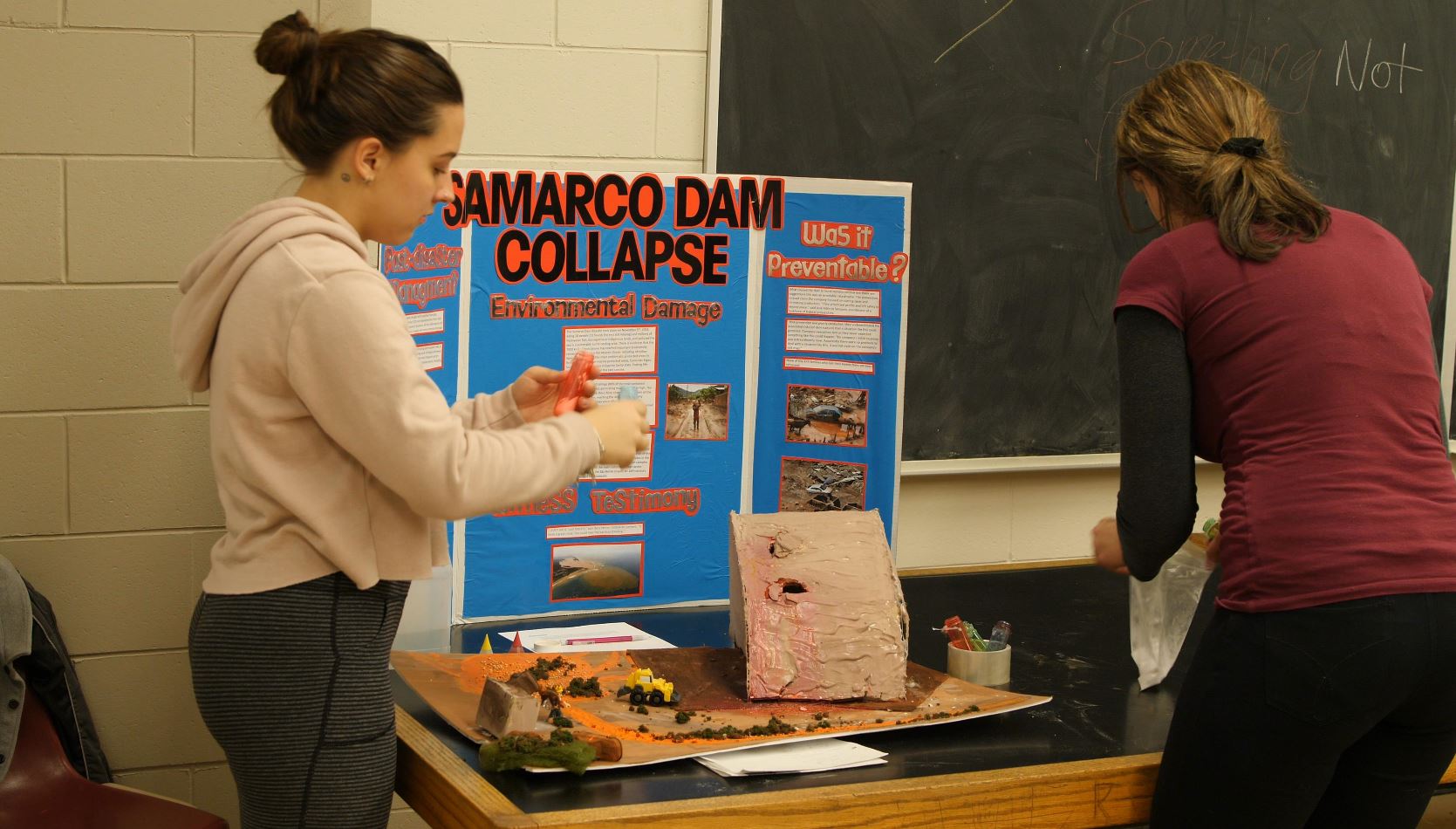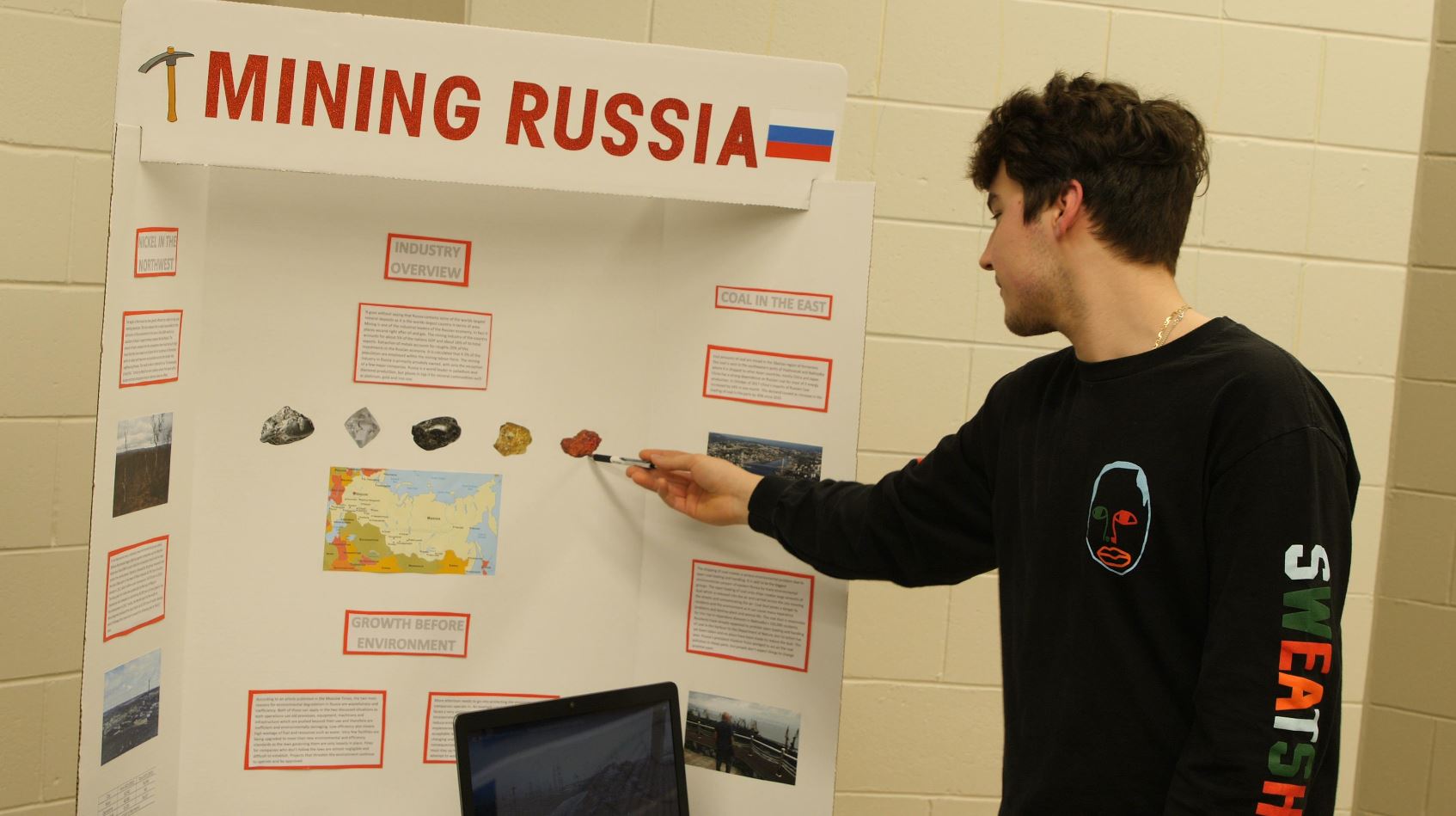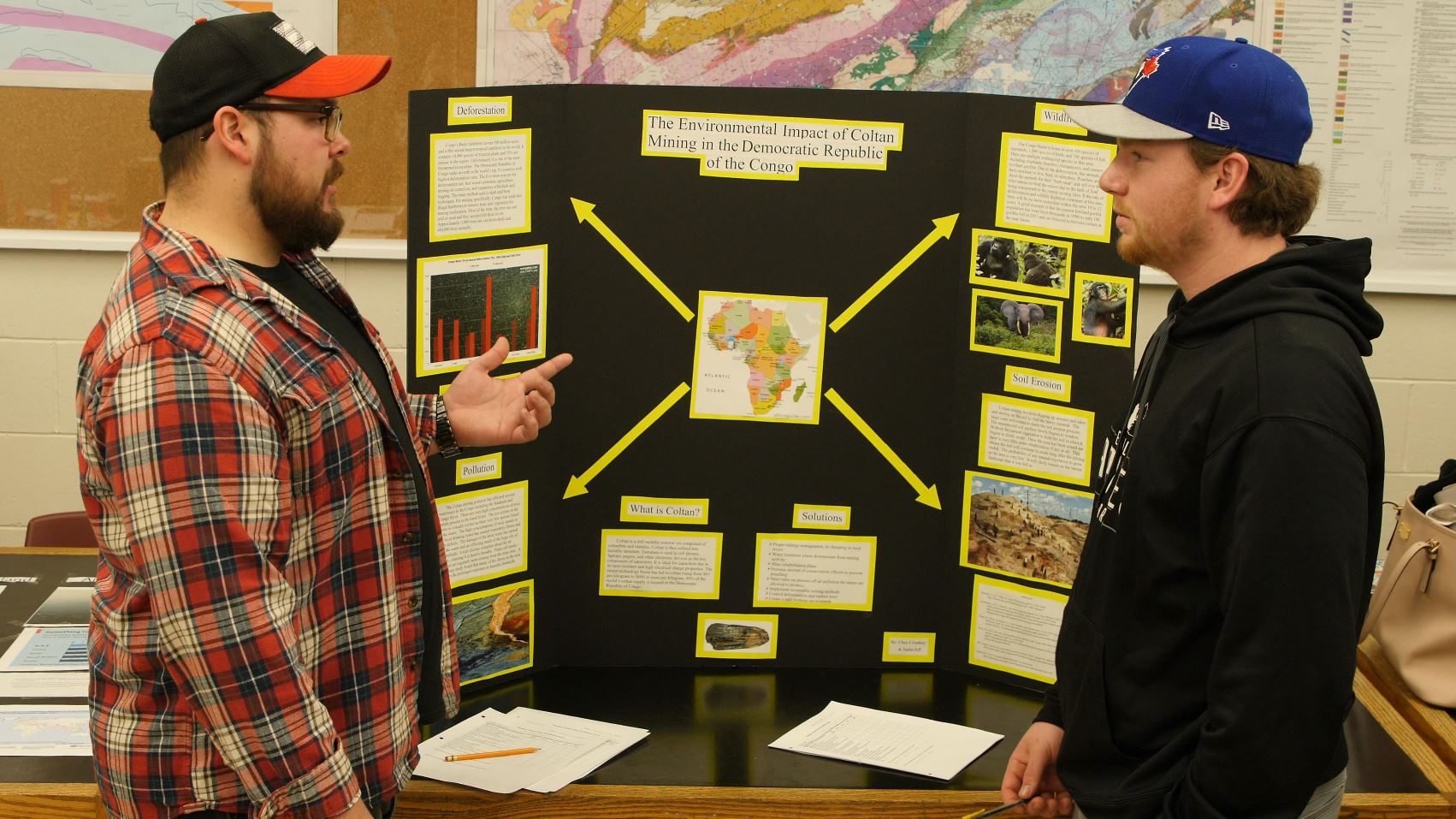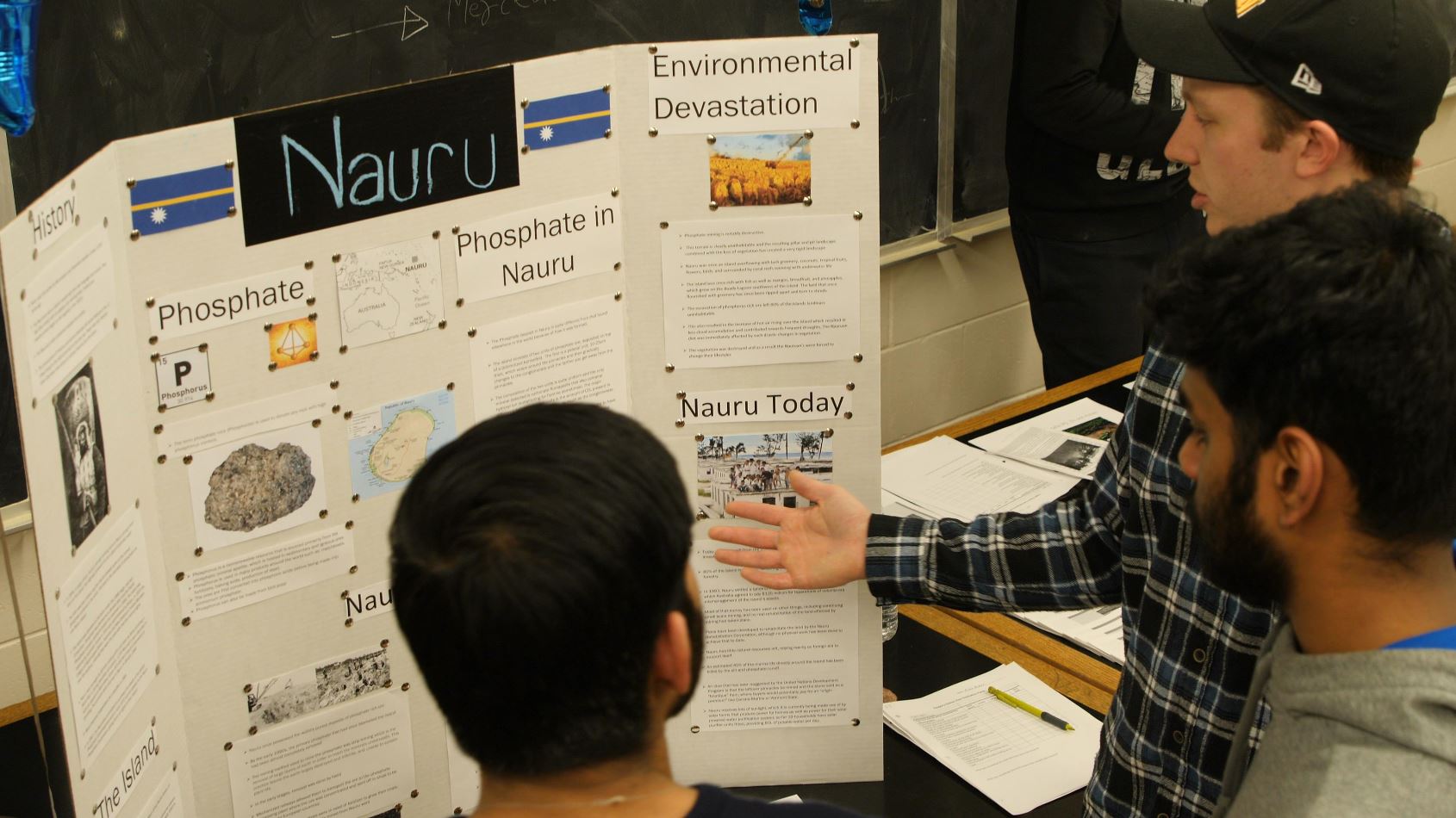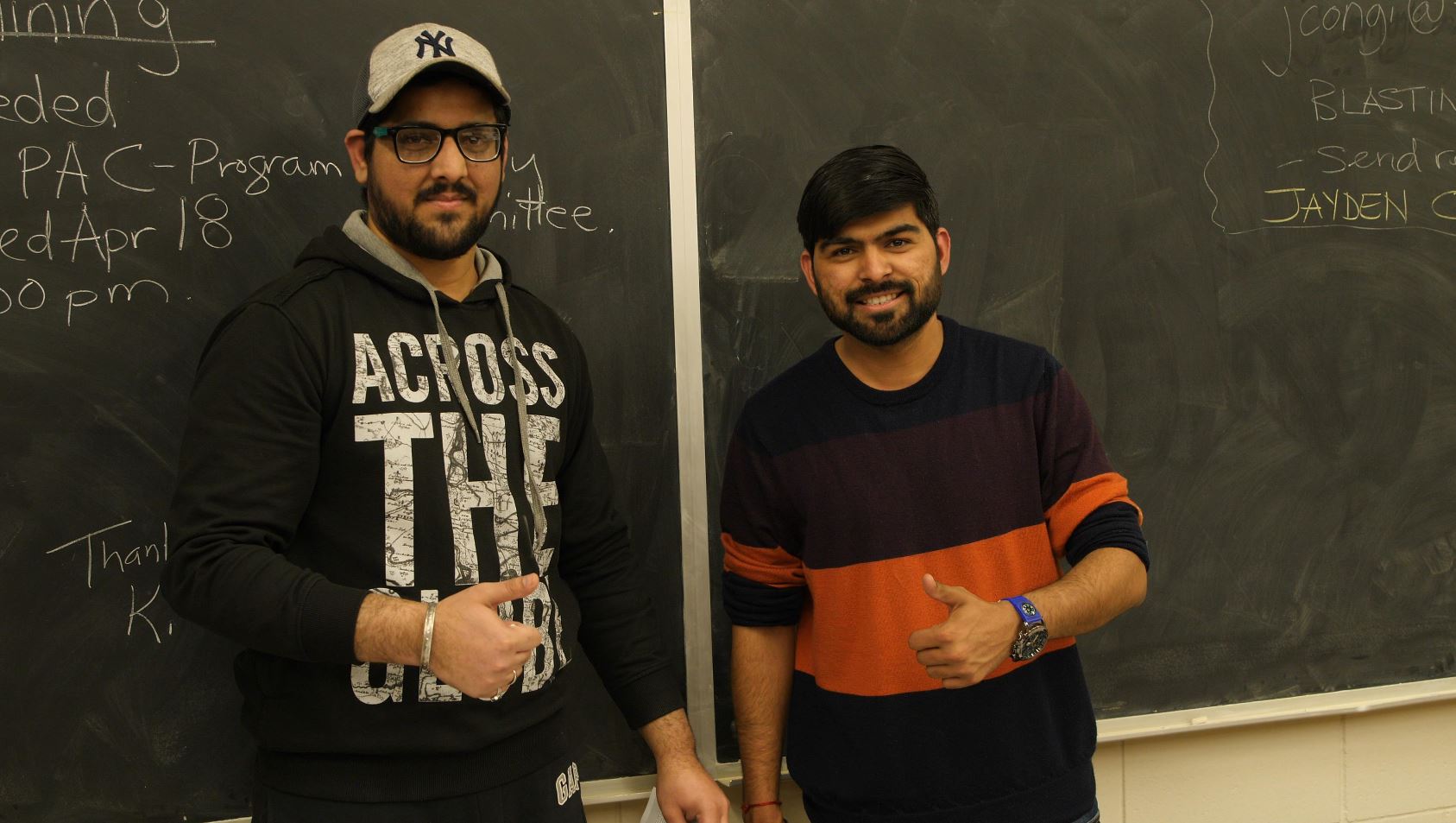Submitted by Nicola Young
As an alternative to the more familiar presentation style of standing before the class with a PowerPoint ready in the background, I have introduced the Trade Show exercise.
My students are in a field where their ability to speak one-on-one with a client, supervisor, or co-worker about the work they are doing will be tested on a daily basis. It occurred to me that trade shows were among the more interesting of environments in which they would be expected to display those skills. This is a sort of culminating activity for the course (Environmental Management for Mining) in which they have addressed numerous issues through smaller assessments including research activities, hands-on exercises, case-studies, and presentations.
In order to maximize the realism of the event, I am extending an invitation to students in other levels of their program, and to the larger college community including faculty and staff. As in a real trade show, the participants will each need to be responsible for the material for times when their partners are away from their booth. They will need to explain their research to peers and visitors as well as to me, so I wanted a method by which to evaluate those different components.
The final mark is a combination of the following factors:
- My assessment
- Rubric modified from original by Dr. Megan Salhus of Okanagan College, British Columbia
- The assessment of their peers
- Each student must assess the efforts of four other groups
- The assessment they provide to others
- From both of the above forms + using the Global Awareness Evaluation Grouping Form
- The assessment of visitors to the show
- All guests are invited to fill out a short comment form regarding any groups for which they would like to provide feedback
As an incentive to ensure that students evaluate one another in a constructive fashion, I mark them on both the evaluations they receive from others and the evaluations they conduct. To make certain that all groups are equally evaluated, I use the Global Awareness Evaluation Grouping form. The members of each group are responsible for evaluations of four other groups according to that form.
As you can see from the various evaluation forms, the focus is not solely on what the students learned, but on how they interacted with others to convey information of importance.



